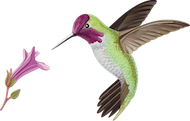The New York Times
Susan Gottlieb has always considered herself a friend to animals, but her idea of friendship may go beyond the norm.
Los Angeles Times
Anyone handy with a saw and a staple gun can build a simple version of this outdoor fun park for felines, devised by Susan and Dan Gottlieb of Beverly Hills.
Associated Press
Spread out along a hillside near the Beverly Hills Hotel, Susan Gottlieb’s baseball-field-size home garden — dubbed the Gottlieb Native Garden — boasts more than 100 species of native plants and brims with wildlife activity.
Huffington Post
“Native plants don’t just save water, they save species,” says Lisa Novick, Outreach and Volunteer Coordinator with the Theodore Payne Foundation, an organization dedicated to encouraging the planting and cultivation of California native plant gardens.
Los Angeles Times
They say that beauty comes from within, but in the case of Susan Gottlieb, it seems to come from the world around her. She is, at 67, not pretty, not handsome, but storybook beautiful.
The Wall Street Journal
Birding has long been a hobby for nature lovers, but the pursuit has recently gone more mainstream—boosted by the rise of ecotourism and the surging interest in a safe and relaxing pastime during the pandemic, along with user-friendly apps that bird lovers can use to record and track different species. Now, the Gottliebs’ garden is a local landmark with close to 20 bird boxes, three seed feeders, four mealworm feeders and around 15 hummingbird feeders. Ms. Gottlieb said she goes through about 70 pounds of sugar a month making hummingbird nectar.
KCRW
Photographer Daniel Beltra spent 40 days photographing the aftermath of the BP oil spill. The spill resulted in 4.9 million barrels of oil pumped into the gulf; only 800,000 barrels have been trapped by containment efforts. We still don’t know the full impact of the spill. Beltra’s photos are now on display through April 21 at the G2 Gallery in Venice.
Los Angeles Times
For the last seven years, Culver City-based artist Jennifer MaHarry has been photographing wild horses in the West. “Their free spirit and majestic beauty is what initially captivated me,” said MaHarry, founder of Eden Creative, where she designs print ad campaigns for film.
The Huffington Post
The LA Art Scene is abundant. Each weekend one can pick and choose from a variety of events to go to…some free some not – but many help great causes… Let’s take a look forward at what’s coming up…and point out some important nonprofit events.
KTLA
Getting There is a group exhibit that culled images from Southern California photographers in pursuit of showing just how many animals could benefit from a wildlife crossing. Coyotes, mountain lions, deer, foxes, lizards and many other creatures are killed each year trying to cross Los Angeles highways and roads.

